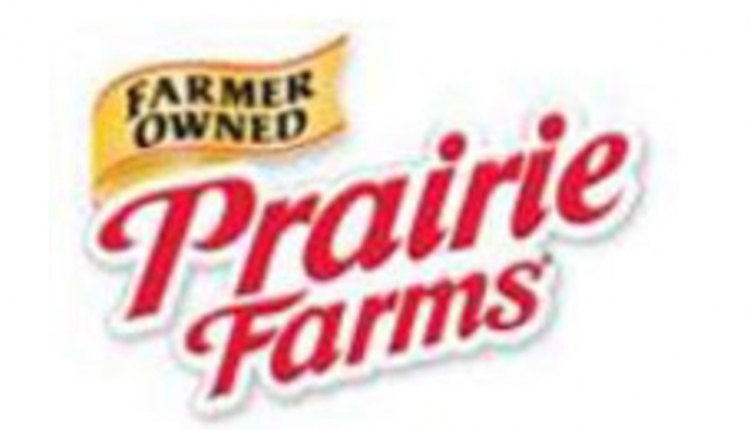The information below has been supplied by dairy marketers and other industry organizations. It has not been edited, verified or endorsed by Hoard¹s Dairyman.

After a few years of significant challenge the outlook for U.S. milk producers is beginning to improve, according to a new report from CoBank. Despite projected supply increases, milk prices are poised for modest improvement in the years ahead thanks to new export opportunities and gains in processing and production efficiency.“We’re seeing dairy farm expansions, meaning producers are hopeful that prices will increase from today’s levels,” says Ben Laine, senior economist at CoBank. “These dairies are banking on the future and on global growth. We believe that there is cause for cautious optimism given prospects for strengthened international demand and the industry’s long track record of innovation.”
U.S. dairies will produce over 225 billion pounds of milk in 2020—approximately 7 percent higher than today’s output—according to projections from the U.S. Department of Agriculture. And domestic demand for milk and milk products will remain relatively flat, given the maturity of the U.S. consumer market. Nonetheless, Laine says, the industry is poised to benefit from overseas demand in Asia, Latin America and Africa driven by population growth and increased middle class consumption.
Exports now represent about 14 percent of all U.S. milk production, compared to less than 8 percent a decade ago. That increases the amount of exposure U.S. dairies have to currency risk, geopolitical events and other unpredictable factors. “The outlook for the next several years is positive, but precarious,” Laine says.
One immediate challenge facing the industry is that processing capacity has not kept up with the growth in milk production.
“New processing plants and plant expansions over the next couple of years will provide some relief,” says Laine. “Meanwhile, the U.S. dairy industry must do everything it can to maintain and develop domestic demand and evolve with customers. This includes the development of innovative products to adapt to changing consumer tastes.”
Going forward the U.S. will need to position itself strategically to be able to compete with other mature dairy producing regions, the European Union in particular. Additionally, the U.S. dairy industry must invest in establishing relationships within sophisticated global supply chains to further develop demand and open new markets, according to the CoBank report.
“Success will hinge on the ability to balance innovation in domestic products with responsiveness and competitiveness abroad,” Laine says.
A synopsis of the report, “Future of the U.S. Dairy Industry Hinges on Exports” is available at CoBank.com. The full report is available to media upon request.
About CoBank
CoBank is a $120 billion cooperative bank serving vital industries across rural America. The bank provides loans, leases, export financing and other financial services to agribusinesses and rural power, water and communications providers in all 50 states. The bank also provides wholesale loans and other financial services to affiliated Farm Credit associations serving more than 75,000 farmers, ranchers and other rural borrowers in 23 states around the country.
CoBank is a member of the Farm Credit System, a nationwide network of banks and retail lending associations chartered to support the borrowing needs of U.S. agriculture, rural infrastructure and rural communities. Headquartered outside Denver, Colorado, CoBank serves customers from regional banking
For more information about CoBank, visit the bank's web site at www.cobank.com.
Exports now represent about 14 percent of all U.S. milk production, compared to less than 8 percent a decade ago. That increases the amount of exposure U.S. dairies have to currency risk, geopolitical events and other unpredictable factors. “The outlook for the next several years is positive, but precarious,” Laine says.
One immediate challenge facing the industry is that processing capacity has not kept up with the growth in milk production.
“New processing plants and plant expansions over the next couple of years will provide some relief,” says Laine. “Meanwhile, the U.S. dairy industry must do everything it can to maintain and develop domestic demand and evolve with customers. This includes the development of innovative products to adapt to changing consumer tastes.”
Going forward the U.S. will need to position itself strategically to be able to compete with other mature dairy producing regions, the European Union in particular. Additionally, the U.S. dairy industry must invest in establishing relationships within sophisticated global supply chains to further develop demand and open new markets, according to the CoBank report.
“Success will hinge on the ability to balance innovation in domestic products with responsiveness and competitiveness abroad,” Laine says.
A synopsis of the report, “Future of the U.S. Dairy Industry Hinges on Exports” is available at CoBank.com. The full report is available to media upon request.
About CoBank
CoBank is a $120 billion cooperative bank serving vital industries across rural America. The bank provides loans, leases, export financing and other financial services to agribusinesses and rural power, water and communications providers in all 50 states. The bank also provides wholesale loans and other financial services to affiliated Farm Credit associations serving more than 75,000 farmers, ranchers and other rural borrowers in 23 states around the country.
CoBank is a member of the Farm Credit System, a nationwide network of banks and retail lending associations chartered to support the borrowing needs of U.S. agriculture, rural infrastructure and rural communities. Headquartered outside Denver, Colorado, CoBank serves customers from regional banking
For more information about CoBank, visit the bank's web site at www.cobank.com.


